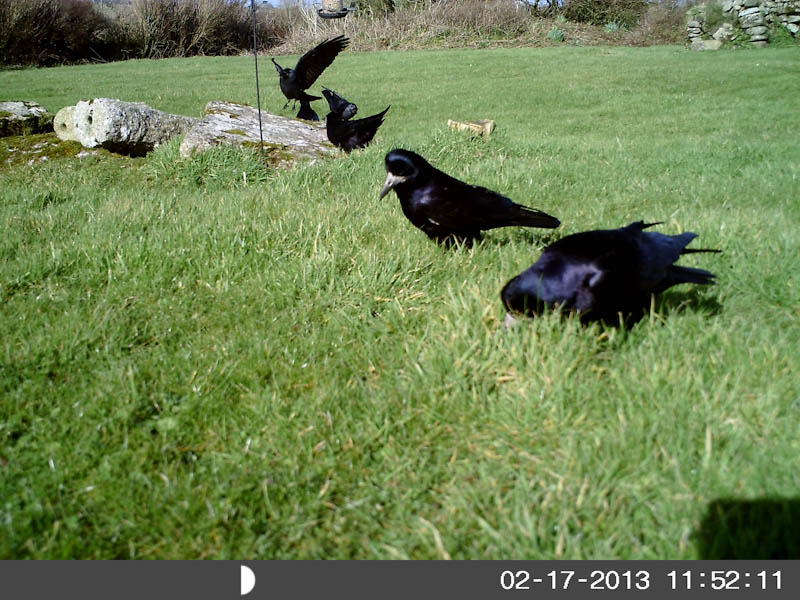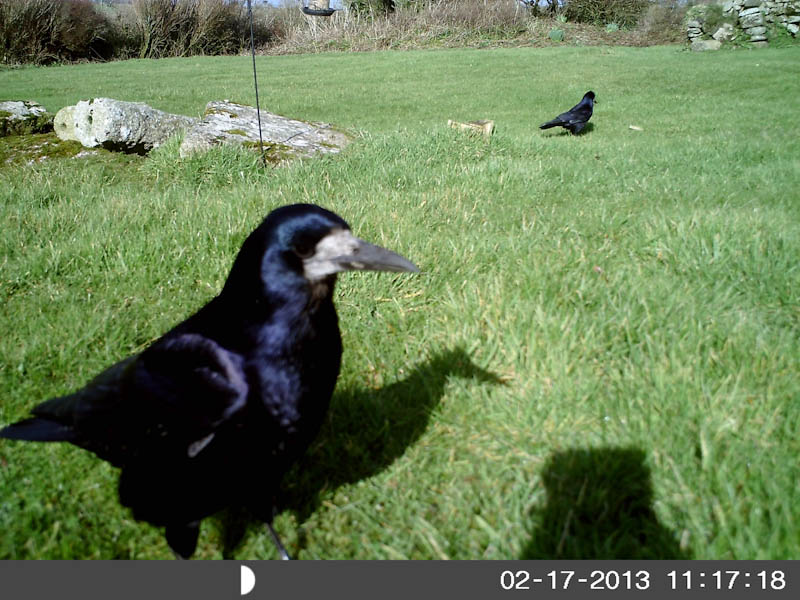While astronomy and photography are my two main interests in life, the ongoing refurbishment of a small cottage set in 8 acres has given me an appreciation of living in the country. While sailing, walking and being away from anything involving a big city has always been pleasurable, it’s not until you live in the boondocks for a while, that you start to notice what’s going on around you on a daily basis.
This is the first of a new ‘Country Life’ section where I can note what we’ve been up to with the cottage rebuild and manage our 8 acres of pasture and moorland scrub.
Over the last month we have started to feed the birds in the garden, so have quite enjoyed trying to figure out what they are. We also have a number of one acre fields criss-crossed with animal tracks and apart from a few foot prints, have no idea what is walking arounds the grounds. With all this going on around us, I’ve decided to add a new section to the bloggy called ‘Country Life’ to cover all these various activities.
This weekend has been rather feature packed. But let’s go back a week, when in a fit of ‘I want that’ in Maplins, I came home with a Fine Offset WH1081 weather station.

The external sensors have been mounted on the observatory roof and have been providing me with data – every 10 seconds – for the last week and include inside/Outside temperature , rainfall rate and amount, wind speed actual as well as gusts, humidity and air pressure.
The plan is to interface the output, so I can add the appropriate data to the ‘Observing Forecast’ section on my webby.
Other exciting stuff is Sand’s new infrared wildlife camera which for the past week, has taken a total of ZERO images of any form of wildlife – apart from us, finally came up with the goods today. Planted in front of a bird feeder, the camera was triggered by a number of Rooks and Hooded Crows.


The unit needs careful aiming as the closest focus point is about 4 feet, so you need to point in such a way that nothing less than this distance can trigger the unit. There is a video option as well, so that’s something else we can play with.
The last and final highlight of the weekend was a walk through the Porkellis Moor. Now owned by the national Trust, the Moor the site for the East Basset & Grylls Mine during the 1850’s. While overgrown now, the spoil heaps have created a few barren areas where not much grows, and where there are still a few signs of the foundations for the machinery used.
Here’s a short Video to give you a feel for the rather barren landscape of this site.
While doing a little research, I found that this area is a designated SSI . The application reads
This site is special for its population of rare and scarce bryophytes (mosses and liverworts) which are adapted to growing on copper-rich substrates. The site is made up of seven areas of formerly mined land and the lower plant interest is primarily found on the spoil tips containing copper-rich waste, although some of the areas have derelict mine buildings and other structures which also support important bryophytes. ‘
it goes on to point out
Nationally rare species include the liverworts Cephaloziella nicholsonii, C . integerrima, C. massalongi and the moss Scopelophila cataractae. The composite site supports over 20% of all known British populations of these four species, C. integerrima has been confirmed at only two other sites in the British Isles since 1950 and C. nicholsonii is a British endemic
I can recommend you pop over to Amanda Scott’s ‘What’s Wild in Cornwall’ Blog for a much better informed view of the wildlife that can be found here.